Wd cloud login. WD My Cloud Home Duo Overview - Two Headed Cloud. Inside and outside
We were reviewing WD My Cloud, a personal cloud storage. We will analyze how it works and why it is needed in this review.
WD My Cloud is a 2-8TB external storage device. Form factor bar. Interfaces - Ethernet and USB (for connecting external drives or flash drives). The device is equipped with its own operating system, My Cloud OS 3.
The whole point of this gadget is to connect it to a router and access data over the network, Wi-Fi, or over the Internet (if you are outside of your Wi-Fi network).
Externally, the hard drive looks quite stylish. And the blue LED is not bright enough to be covered with a pillow at night.

Many will ask why the My Cloud doesn't have built-in Wi-Fi. This is due to the problems of wireless communication in terms of security and speed, since Ethernet is more reliable in these characteristics.
Connection

The whole setup takes 5 minutes and consists of three steps.
1 - Connecting the disk to the router
2 - Setting up through http://files.mycloud.com/setup and registration in the service
3 - Downloading additional software, setting up synchronization.
And that's all, you can work.
You can access your data while on and off your Wi-Fi network.
Note. Such ease is available to everyone except those with Apple AirPort Extreme routers, the connected drive is not located during setup and you will have to correspond with WD support for a long time. There was no solution to the problem on the network that was working for everyone.
Software
WD is great and has made a lot of programs for various platforms. They are all free.
WD My Cloud (iPhone and Android)- allows you to manage files on the disk, as well as back up photos and videos from your smartphone.
In addition to the My Cloud drive, the app can connect to your Dropbox or Google drive and download files from it directly to your hard drive.
On iOS, photos and videos can be sent via photo albums
 |
 |
Of the minuses - there is no way to delete files from the disk using this application.
WD Photos (iPhone and Android)- for viewing and selecting photos.
WD Sync (PC, Mac)- backs up the specified folders and documents to disk.
In addition to programs, access to the disk and its settings can be obtained through a browser.
My Cloud Features
The My Cloud can easily be a shared repository of documents, music, and movies. The disk has very flexible access rights. You can configure access to sections for different users.

Mac users can set up Time Machine (I don't use it, it wears out a laptop SSD very much and I don't really need it). At startup, it immediately finds the disk and asks where to drop the backup.

A native WD SmartWare utility is available for PC, in which, among other things, you can set the backup frequency.
I have not carried out speed measurements as they are very dependent on the Wi-Fi speed. In my case, this is about 50 Mbps.
Built-in DLNA Server allows you to play movies on DLNA compatible TVs. There is also support for various applications, for example, Plex for viewing streaming video, Acronis for backup, and others.
Another possibility is to give access to the file from the hard disk to anyone. I'm not saying that this is a replacement for Yandex.Disk, but this function will not be superfluous.
Judging by the reviews, many My Cloud fans install a torrent on it. I have not tried it myself, but the opportunity is interesting.
conclusions
At the time of this writing, the cost of WD My Cloud 2 TB is 10,000 rubles. Versions with a capacity of 6 TB - 22,000 rubles.
In my opinion, this is a good device for home and family. You should not make excessive demands on him. For backing up photos and videos from your phone, storing non-critical data and watching movies, it's a good solution.
I write non-critical data, because movies can be downloaded again, but work files and other important data must be duplicated. This is not due to distrust of the brand, but for maximum data safety.
For professional work, mirroring is not enough here, since there is one physical disk installed. For these purposes, WD has a My Cloud Mirror model, we have an overview of a similar model from the previous generation WD My Book Studio Edition II.
As a working tool, I prefer a mirroring disk with a USB 3.0 interface, or better Thunderbolt.
Credit to PR agency 2L and WD for providing us with the hard drive for review.
The name of the new WD My Cloud NAS translates to “my cloud”. Although in reality it is not quite a cloud and not even a fully functional NAS. This is a convenient and compact backup device, a simple media server and storage device with the ability to access via the Internet for more than modest money. In terms of data transfer speeds, the My Cloud is clearly not the leader here. And with the level of reliability of a single-disk drive, where it is impossible to organize a RAID array, things are not very good. But it is not valuable for this.
How does WD My Cloud compare? For example, with the Apple Time Capsule, especially since "my cloud" has built-in support for Time Machine out of the box. Plus, the My Cloud is about one and a half times cheaper than the latest generation tower pod, and if you don't need router and wireless access point features, then a WD drive can be a good alternative. And the snow-white body of the My Cloud will fit perfectly into the "apple" family.
A direct competitor to WD My Cloud is the Seagate FreeAgent GoFlex Home single-drive NAS, which also supports Internet dial-up, Time Machine functionality and UPnP server. FreeAgent GoFlex Home also does not set speed records, and it uses slow USB 2.0 to connect external drives, so WD My Cloud clearly wins purely for hardware.
Specifications
Built-in hard drive: 2, 3 or 4 TB with SATA interface
Interfaces: network Gigabit Ethernet, USB 3.0 (up to 5 Gbps) for external drives
Supported operating systems: Windows XP / Vista / 7/8, OS X 10.6.8 or higher
Protocols: CIFS / SMB, NFS, FTP, AFP, DHCP, SSH, UPnP, DLNA and iTunes servers
Dimensions: 49 x 139.3 x 170.6 mm
Weight: 0.96 kg
Equipment: Category 5e Ethernet cable, AC adapter
Price: about 5200 rubles
Inside and outside
The heart of WD My Cloud is the Mindspeed Comcerto C2200 system-on-a-chip, specially designed for network devices, with two Cortex A9 ARM7-based computing cores that run at a clock speed of 1.2 GHz. The device also has a 256 MB DDR 1600 MHz memory chip and a 512 MB flash memory module.
Higher-end NAS's usually do not come with hard drives, leaving the choice at the discretion of the owner. WD My Cloud, on the other hand, comes with a hard drive already installed, which is a 3.5-inch Western Digital WD Red series drive. This series includes hard drives designed for entry-level NAS'y, which combine from one to five drives. These SATA 6Gb / s variable spindle hard drives are highly reliable and designed for 24/7 use. Our modification of the WD My Cloud uses a 2TB model and offers 3TB and 4TB drive options.
The case of WD My Cloud is traditionally designed for external drives of this brand in the form of a book: the "cover" is made of glossy white plastic, and the "block" with numerous ventilation holes is made of silver plastic. Cooling is completely passive, so the NAS is practically silent - you will hear only a quiet crackle of the hard drive. Unfortunately, different words are no longer encoded with Morse code in the casing holes, as it was in previous generations of WD drives, here it is just a pattern.
WD My Cloud does not have any hardware controls - all commands are sent over the network. On the front panel there is a multifunctional LED indicator of operating modes, on the back there is a USB 3.0 port for connecting external drives, a gigabit network port, a power supply connector and a reset button recessed inside the case. On the bottom panel, you can find an information plate with a serial number, MAC address and other service information, as well as four stable legs.
Software base and web interface
The software basis of WD My Cloud, like the vast majority of NAS's, is Linux, in our case we are talking about Debian Wheezy. This means that it will not be difficult for a person who understands to get into its jungle and expand the functionality of the device without making changes to its hardware. In particular, you can install the Transmission torrent client on the WD My Cloud, which we have successfully done. How exactly, a little later. To take full advantage of WD My Cloud's features, including Internet access to files stored on it, you need to connect the NAS to a router and set up an account with the WD My Cloud online service. Of course, if necessary, you can connect the device directly to the computer and work with it as with a regular external drive.
All settings and management of WD My Cloud are carried out through the web interface, which can be accessed either through the shortcut that appears after installation, or simply by typing the device's IP address in the browser. If you've created a WD My Cloud account, you'll be able to access this interface on mobile devices as well as use the WD Photos app.
The fully Russified web interface is very laconic, although it contains all the settings necessary for the operation, which are scattered over five pages: "Users", "Resources", "Access to the Cloud", "Safepoints" and "Parameters". At the same time, the main page performs not only purely informational functions - from it you can go directly to the windows for adding devices, users and resources (network folders) by simply clicking on the plus signs. On the "Users" page, you can add new users and configure their access rights, on the "Resources" page, add and configure access to shared folders. The Cloud Access page allows you to add mobile devices that can connect to the device over the Internet. On the Safepoints page, you can make a kind of "backup backup", that is, back up data from WD My Cloud to an external USB drive or other device on the local network.
The Settings page contains all the basic settings for WD My Cloud - from enabling SSH and FTP access and enabling DLNA (TwonkyMedia) and iTunes servers to factory reset and drive firmware update. The overall impression of the web interface is extremely positive: it is logical, understandable, beautiful, finally. And everything would be quite wonderful if it were not for some mistakes in Russification. For example, in the menu item for resetting system settings, instead of Quick Recovery and Full Recovery, for some reason, it says “Quick Check” and “Full Check”, although everything is correct in the WD My Cloud electronic manual.
Festina Lente
WD My Cloud does not demonstrate any miracles of performance, and its performance when accessing a local gigabit network is not very impressive: the average read speed of a 300 MB file recorded by us using HELIOS LanTest 6.6.6b4 was only 45.0 MB / s, and 18 writes. 7 Mb / s is clearly not enough for a gigabit network. But do not forget that the speed of sequential read and write in a single-disk device is especially strongly dependent on the size of the files: for example, the measured speed of reading a 3-gigabyte file has already reached 63.6 MB / s, and 12-gigabyte - nearly 70 MB /With. And this is already quite a decent indicator. In any case, for a device of this class, designed mainly for regular backups, high data transfer rates are far from the main thing.
Putting up Transmission
There is nothing special to say about the performance of WD My Cloud itself, it performs all the declared functions: backup, streaming, available via the Internet from smartphones and tablets. It is much more interesting to talk about what you can do with this NAS by getting into the Debian Wheezy operating system installed on it. But we warn you right away that if you manage to "drop" it, then you will have to say goodbye to the guarantee.
First, you need to enable SSH access on the "Settings" page of the web interface (Network → Network Services) and make the necessary settings in the SSH client, for example, in PuTTY for Windows. On the "Session" tab, fill in the IP address of our WD My Cloud and save the session under a new name. On the "Data" tab, enter the superuser name root and the password (by default - welc0me, in the future, of course, it is better to change it). We press the button "Connect" and get into the Debian console.
Let's choose the Russian encoding by editing two files:
# nano .bashrc
Change the export LC_ALL-С line to export LC_ALL = "ru_RU.UTF-8", below we add the line export LANG = "ru_RU.UTF-8".
Save (, Y, Enter) and open the second file:
# nano .profile
Here we add the same two lines at the end:
Export LC_ALL = "ru_RU.UTF-8" export LANG = "ru_RU.UTF-8"
Save, reboot the NAS:
# reboot
Before installing Transmission, you need to create two new folders on WD My Cloud for storing temporary files and full torrents - Temp and Torrents. It is best to place them inside the Public folder or some other folder of the same level, otherwise the data will be written to the system partition and quickly render your NAS unusable.
Now we can register the address of the repository from where we will download Transmission:
# echo "deb http://ftp.ru.debian.org/debian/ sid main" >> / etc / apt / sources.list
Let's make a backup copy of the original list of repositories:
# cp /etc/apt/sources.list /etc/apt/sources.list.bak
Let's update the data about the available packages:
# apt-get update
Finally, install Transmission and the missing packages:
# apt-get install -t sid transmission-cli transmission-common transmission-daemon
After the installation is complete, stop the Transmission daemon to edit the configuration:
# /etc/init.d/transmission-daemon stop
Let's set superuser rights for it:
# sed -i "s / USER = debian-transmission / USER = root / g" /etc/init.d/transmission-daemon
Now you need to edit the Transmission configuration file (by the way, remember that to change the config of an already running Transmission, you need to stop the daemon itself before opening settings.json, and not restart its process after the changes). We open:
# nano /etc/transmission-daemon/settings.json
First of all, you need to change the location of the download folders we created earlier. If you created them in the Public folder, then the settings should look like this:
"download-dir": "/ DataVolume / shares / Public / Torrents", "incomplete-dir": "/ DataVolume / shares / Public / Temp", "incomplete-dir-enabled": true,
"rpc-authentication-required": false, "rpc-whitelist-enabled": false,
By default, the port for accessing the torrent client is 9091, if desired, you can change it in this line:
"rpc-port": 9091,
Of course, other settings can be made in the Transmission configuration file. Save them and exit nano back to the console (, Y, Enter). Let's restore the original list of repositories:
# mv -f /etc/apt/sources.list.bak /etc/apt/sources.list
That's it, you can run Transmission:
# /etc/init.d/transmission-daemon start
If everything is in order, we will see the message "OK", after which we can open the application through its web interface by entering the WD My Cloud IP address in the browser and, through a colon, the port for accessing Transmission (that is, 9091 or another in settings). Let's check the functionality by trying to download and distribute files.
For ease of use, you can download a special graphical interface for the remotely installed, existing in versions for Windows, OS X and Linux. In it you will need to register your program settings (IP-address, port), after which the GUI is ready to work.
Worth its money
What do we have in the bottom line? A neatly assembled network attached storage with a specialized processor and hard drive, but at the same time it is only 1000 rubles more expensive than the hard drive itself. In addition to backup functions for Windows and OS X systems, this NAS provides remote access to files stored on it over the Internet, including from smartphones and tablets. The built-in media server is capable of streaming media files to any DLNA and iTunes enabled devices within the local network.
Unfortunately, the functionality of WD My Cloud out of the box is limited to this, but it does not matter: support for SSH access to the Linux Debian operating system allows enthusiasts to expand it at their discretion. We checked with our own hand the possibility of installation and full operation of, probably, the most useful program for NAS - Transmission, and this is already a very serious plus for such an inexpensive device.
Test results
Creation of 300 files of 20 KB: 15.1 s
Opening / closing 300 files: 2.2 s
Deleting 300 files: 9.3 s
Writing 300 MB to a file: 18.7 Mbps
Writing 3000 MB to a file: 24.2 Mbps
Writing 12,000 MB to a file: 26.2 Mbps
Reading 300 MB from a file: 45 Mbps
Reading 3000 MB from a file: 63.6 Mb / s
Reading 12,000 MB from a file: 70.8 Mbps
Locking / unlocking parts of a file 16,000 times: 20.2 s
Reading a folder (640 files): 157.5 ms
Almost the namesake of the WD My Cloud home cloud, Duncan Macleod, did not have the luxury of a second head. Because of this, he often had to worry about trifles. Even after a walk on the bottom of the sea, sticking your head out was a risky business: they might, after all, chop off, and then that's it, hello.
WD engineers did not equip the My Cloud Home Duo with artificial intelligence with a powerful instinct for self-preservation worthy of Duncan Macleod, but this is not because they cannot, but because they don’t need to: the “head” of the My Cloud is hidden in a reliable self-sufficient case, cleaner than the death of Koshchei, and to the heap is also duplicated. The data from there will not go anywhere, nothing will be forgotten.
Historical Background: The My Cloud traces its lineage to storage named My Book. In those days, when the My Book entered the market, this device looked very strange, like an overgrown drive-carrier with not very clear functionality. Even today, the public does not understand very well what a NAS is, what a bunch of everyday problems it solves and what money it can save, and in those days the first home or personal storage with specialized software was literally ahead of its time. This is probably why the WD people responsible for communication with the people prefer to call My Cloud devices a home or personal cloud, avoiding the words Network Attached Storage.
Fortunately, our readers know what a NAS is, since devices of this type constantly appear in our reviews and thematic materials. We sincerely believe that today the home cloud is ultimately the best way to store data, if, of course, it is organized according to the mind and without unnecessary reduction in cost, which is unacceptable for a single archive.
WD My Cloud Home Duo NAS front and back. Western Digital press service illustration
Many of the My Cloud models you can find reviews on the web look very attractive due to the incredibly low price. However, they have one problem: they are single discs. Storing all data on a single hard drive is still a risky business. Even taking into account all kinds of additional software and backups on external storages. Raid-array of the 1st level remains the easiest way to protect your data from death along with the drive, and along the way, RAID 1 also speeds up the work with files, allowing you to carry out all sorts of sorting and downloading data over a gigabit Ethernet or wireless network with a much shorter period of time ... All in all, please love and favor WD My Cloud Home Duo, a two-disk Network Attached Storage from Western Digital.
My Cloud Home Duo arrived to us in a white and aquamarine thin cardboard box (sorry for my color blindness, if that :)). The box is small, easily fits into a regular-sized bag, with which they go to the grocery store. The weight of the device is perceptible, but not enough to dry your hand or tear the plastic handles of the bag, so there is no need to take care of any special conditions of carrying.
The body of the device is fixed inside the box in "blocks" made of shock-absorbing material. There is free space between the pads, and although the distance from the box wall to the wall of the My Cloud case is decent and the cardboard is strong, some particularly active grandmother can pierce a box in the metro with an umbrella. In short, it is not recommended to be careless about the My Cloud Home Duo on the way.
In the box, along with the device, there is a power supply unit with an adapter for an American-type outlet, a good quality meter-long Ethernet cable (just to attach the NAS to a wireless router), and documentation. The presence of the cable pleases - if the user has not thought of this moment, he will not have to go to the store a second time.
Turning on the WD My Cloud Home Duo is as simple as a floor lamp: directly into a wall outlet, without any switches on the power cord. Therefore, the installation process looks like this: we connect the de-energized NAS to the router, then plug it into an outlet, and after hearing the noise of the fans and seeing the light between the two halves of the My Cloud Home Duo case, you can go to the browser and connect to the mycloud.com cloud service, register and contact WD My Cloud Home. The installation process, or rather the initial setup of the device, is so simple that it boils down to melancholic clicking the "Next" button while viewing very obvious help files.
After the initial setup and account creation (which takes a couple of minutes), you can start using the My Cloud Home Duo. You can connect to your personal cloud in two ways, through the MyCloud cloud service or through the network environment from a PC. If there are shared folders, Windows 10 detects a device on the local network; in this case, only the Public folder will be available. There is little sense in a local connection; it will only be needed if there is no Internet access.

WD My Cloud Home Duo NAS on top. Western Digital press service illustration
In the usual case, the connection will be made via the mycloud.com cloud service. You can connect using an Android or Windows application, or via a web browser. The last method is the most convenient in my opinion.
The web interface looks the same in a mobile browser and in a regular one. Files on disk are displayed in front of users in the form of a tree structure or sorted by type. Left and right are two menus. In the right - actions with files, in the left - the choice of the way of displaying data, activity log, settings and services. The latter significantly expand the functionality of the device.
Most useful service (app within app) is Plex Cloud Media Center. There are also auxiliary services such as voice control of an audio player, synchronization of multimedia content from social services with a personal cloud, music search by meta tags, file synchronization with cloud Internet services such as Google Drive or Dropbox.
In the settings you can find the management of user records and rights, the choice of the type of raid array (Jbod or Raid 1), restart or shutdown of the device, as well as the function of destroying all data on disks.
The Windows app is essentially not much different from Windows Explorer: you can see files and folders on the logical drive of the WD Cloud device, as well as on portable drives connected to the file storage via USB. Interestingly, the Services menu contains other applications such as Norton antivirus software and Acronis True Image. Because these programs are paid, the benefit of being included in the app is that Western Digital guarantees compatibility with the My Cloud Home Duo.
The Android application is equipped with additional functions due to the specifics of this OS: the inconvenience of file managers, the tendency of users to lose and break smartphones, etc. Even during installation, the application offers to synchronize the multimedia files of the smartphone with the user's cloud; in the settings, you can also enable the use of the cellular network for backups, use smartphone tools such as a fingerprint scanner for additional protection, and reset the cache. The rest of the app is not much different from the mycloud.com web interface.
The described functionality is more than enough for a home NAS: access to various data can be organized and limited for a large number of users and devices. Actually, this is all we need: having come, for example, to a management company or a passport office, send a photocopy of the required document to the secretary by mail, get access to working documents anywhere and from any device at any time, securely store a personal collection of media files, and also be able to watch any photo or video at any time. Additional options for organizing your home media library are provided by Plex - a cloud media center is perfectly combined with cloud home storage.
About speeds. In real conditions, the speed of file exchange with cloud storage will mainly be determined by the speeds of the local network or Internet connection (for devices connected from outside). However, if you use MyCloud with a Plex media center, or often drop large amounts of data on it, such as rough videos, it is quite possible that the speed of the drive itself will be important. Also, a situation may arise when several users will simultaneously access the drive over the network, copying large files to it. In general, based on these considerations, we decided to measure the speed of the device; they were about 100 MB / s for reading and about 70 MB / s for writing. This corresponds to 800 Mbps and 560 Mbps; thus, when reading, the speed will be close to the bandwidth of gigabit Ethernet, which means that TVs and media players will not experience problems receiving content at high speed. As for the recording: perhaps it could be faster, but we must remember that the My Cloud Home Duo contains Red series hard drives, optimized primarily for uninterrupted operation 24/7 and thus providing high reliability of data storage.
NAS (Network Attached Storage, or Network Attached Storage) servers have always been associated with sophisticated equipment that is very difficult for a simple layman to use, but WD once again proves that it is not difficult. Anyone can use the WD My Cloud PR2100, even a blacksmith.
There are now so many types of NAS servers available for use on the market that they can be used normally in every home. The WD My Cloud PR2100 is a network-attached storage device that offers a variety of storage options, including home cloud functionality and many multimedia features such as streaming a movie directly to your TV.
You can connect to its hard drives from any device that you have on your home network. You can use your Android smartphone, iPad with iOS, MacBook with macOS, Windows PC, Smart TV with Tizen, and others, all gadgets will be able to access the My Cloud PR2100 and will connect without any problems.
The device is powered by an Intel Pentium N3710 processor, at 1.6GHz, it also has 4GB of DDR3L RAM. The most important factors here are the two 3.5-inch hard drive pockets. I tested a model with two WD Red 8TB drives.
The drive bays are accessible from the front of the chassis. You will also find a power button and a USB 3.0 port with a copy button. Thanks to this solution, we will be able to connect to the NAS as an external flash memory and create data backups without using a computer.
The rear panel has an additional USB 3.0 port, two Gigabit Ethernet ports, and two power ports. The second is used to connect a backup power supply.
The kit includes a power cord, an Ethernet cable to connect the NAS to a router, and an installation guide.
The device is connected to the socket and the router (it is advisable to use a Gigabit connection, which will give a real data transfer speed of about 100 MB / s), turn it on, go to the configuration toolbar and in just a few minutes everything will be ready to work.
If you do not own the network options, you can leave the default settings. From the point of view of the average user, the most important steps to take when connecting a My Cloud PR2100 are RAID configurations and shares.
This is the most important step to take after setting up your device.
The NAS can operate in JBOD mode, in combination with RAID 0 and RAID 1. If you need maximum capacity, select RAID 0. In my case, the PR2100 gave 16 TB of storage space, which is written alternately to one and the other hard disk.
Conversely, if security is your concern, choose RAID 1, where one drive backs up the data of the other. As a result, the space will be limited to 8 TB, but if one of the drives is damaged, you just need to replace it with a new one, and the motherboard will be rebuilt without losing any data.
After setting up a RAID, it is still worth looking at users and notifications occasionally. The WD My Cloud PR2100 Admin Dashboard allows you to define the Shares that will be available to individual users or groups. We can freely customize everything, both the list of users and the disk space that will be available to them. Some directories may be visible to all devices on our network, while others may require a login.
What can the WD My Cloud PR2100 do?
Probably the most commonly used NAS feature will be data backup. We can make copies of Windows machines through the WD SmartWare Pro software, as well as through the Time Machine utility from Mac computers built into the system.
We can also create backups from external removable drives, even directly - by inserting the drive directly into the NAS. We have two USB 3.0 ports and the front port has a button to copy data directly to the NAS, without the need for a computer.
A home cloud can also work away from home, the WD My Cloud PR2100 can be configured so that some of the information is available remotely from our home network. Thus, we get access to files from anywhere with the Internet. We can share files with other people, friends or clients. Cloud access is fully customizable. Files can be viewed through MyCloud.com or through the My Cloud mobile app.
WD My Cloud also allows you to install applications that extend the functionality of your NAS. On your device, you can even host a website on CMS WordPress or Joomla, phpBB forum or connect Dropbox to sync data between this service and the NAS. To do this, we have an application that supports aMule, which is a rather archaic idea, and here I did not find applications that support torrents.
We'll also be able to set up a Plex server to stream media stored on disk. I wish the Kodi app was more useful. But, there is support for streaming media, the WD My Cloud PR2100 will play stored photos, music and videos on DLNA home devices. One of the biggest advantages of this NAS is the ability to transcode audio and video files. We can also play music on iTunes compatible devices.
You yourself can set up the system in different ways, but by default DLNA and iTunes-compatible devices look for media stored in any public folder for which media sharing is enabled. All you need to do is turn on the DLNA media server in the NAS settings.
From now on, players will be able to play online, on smart TVs, PlayStation or Xbox consoles, or on Kodi systems, on any device.
Outcome
The WD My Cloud PR2100 is a good choice for anyone looking for an easy-to-use NAS. If I had to list one of the most important features of the My Cloud PR2100, it would be ease of setup and management.
You won't find many of the options known from QNAP or Synology products on this NAS, although this is not always a disadvantage. If you don't want to practice web administration and just want a secure device to work right out of the box, this WD NAS is a great choice.
The biggest disadvantage of the WD My Cloud PR2100 is the price. The device I tested, equipped with two 8TB WD Red hard drives, will cost about 61,000 rubles. That's quite a lot. Paying that price, you may be complaining about small configuration options, few useful apps, or lack of an HDMI port for multimedia playback, for example.
During my testing of the My Cloud PR2100, it ran smoothly and without maintenance, copying data from Windows and Mac computers. On my home network, the data transfer rate is around 90 MB / s using Wi-Fi, while for the NAS, data transfer rate is not a key parameter, reliability is more important and WD is the company that can provide it.
The My Cloud PR2100 is a very good choice if you are looking for a NAS drive and can pay for ease of use.
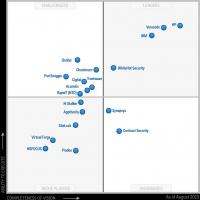 Analysis of legacy code when the source code is lost: do or not?
Analysis of legacy code when the source code is lost: do or not?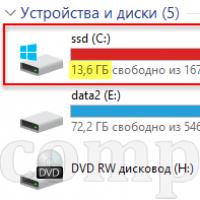 Windows does not load after installing updates Laptop does not turn on after updating windows 10
Windows does not load after installing updates Laptop does not turn on after updating windows 10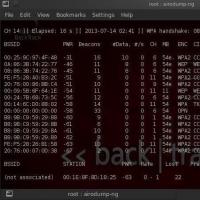 How to crack a password: an overview of the most common methods
How to crack a password: an overview of the most common methods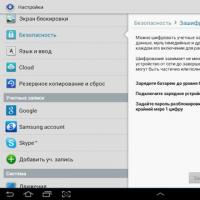 Disable encryption on the tablet
Disable encryption on the tablet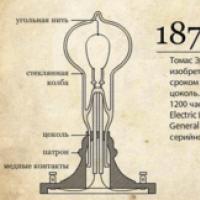 Creation of a light bulb. Edison's light bulb. Who Invented the First Light Bulb? Why did Edison get all the glory? Incandescent lamp device change history
Creation of a light bulb. Edison's light bulb. Who Invented the First Light Bulb? Why did Edison get all the glory? Incandescent lamp device change history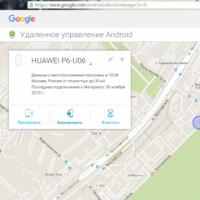 How to quickly find your phone on google, wherever it is
How to quickly find your phone on google, wherever it is The electric incandescent lamp was invented in russia
The electric incandescent lamp was invented in russia